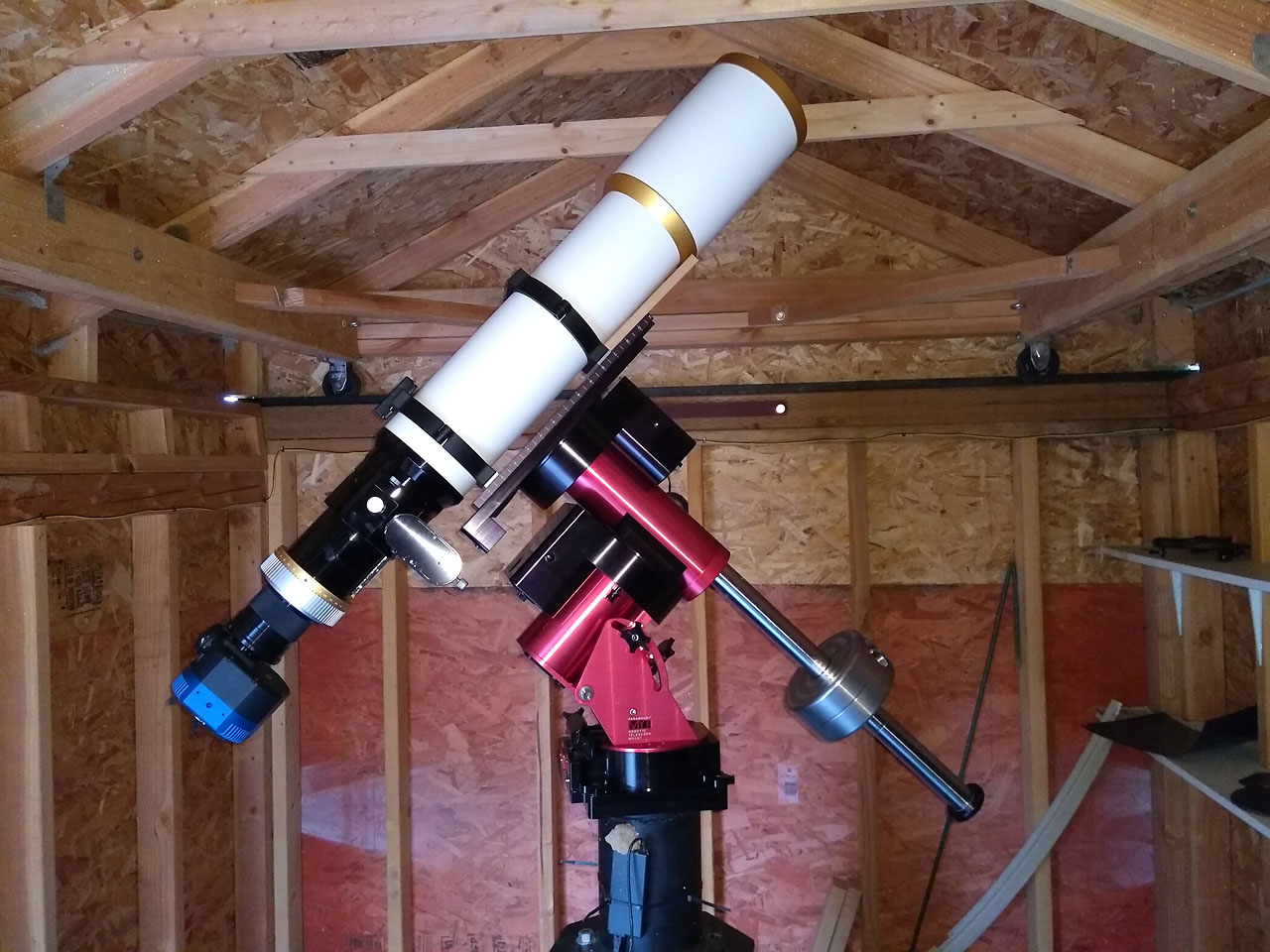I was at a star party most of last week, and have 2 or 3 images from that waiting for processing. There are also 2 new images from Australia I had hoped to share with you, but they are also in the queue for processing, as I am too busy with other priorities (ones that will, hopefully, generate immediate income). But not wanting to have no updates to this blog for too long, I thought I would share some details on my new mount, the Paramount MyT.
Paramount pronounces it as “mighty”, as in “Mighty Mouse”, which is kind of silly because it’s actually the least mighty of all the mounts they produce. And I can’t say it without thinking of Mighty Mouse! It is capable of carrying a 50 pound load (telescope, camera, accessories, etc.), which is similar to the AP Mach1 it is replacing. Both Paramount and AP manufacture mounts capable of carrying hundreds of pounds, but they are beyond my need (and budget). The biggest difference between the Mach1 and MyT is that the latter (like all Paramount mounts) is specifically designed for robotic/remote operation. The Mach1 is certainly capable of remote operation, but the MyT does it better.
The telescope/camera combination shown here weighs about 30 pounds. With a single, 20 pound counterweight, using the standard counterweight shaft, it will not quite come to balance. If you look carefully you’ll see that I have an extension on the shaft, which I got so that I could move the weight out a little bit further. But it turns out that the weight of the extension is itself enough to allow perfect balance with the counterweight not even at the end of the original shaft.
Another big feature of the MyT mount is that it comes with “TheSkyX” (TSX) software to control it. I called this a feature, but it could also be called a weakness because you NEED this software to control the mount. There is no ASCOM driver to talk directly to the mount with other applications, nor is there a “smart” handset that could be used to control it – not even as an option. They do provide an ASCOM driver that allows other applications to talk to the mount through TSX. The mount also comes with “add on” software for camera support, so you could do everything within TSX, but most people will use other applications for image capture and/or guiding.
There is also a “TPoint” add on for TSX, which does a very precise modelling of the telescope’s pointing, compensating for a wide variety of issues that degrade pointing accuracy in every mount. After a TPoint run, the mount will point the telescope very accurately at any part of the sky. Furthermore, the continuous accurate correction of pointing means that for fairly long exposures you can run without guiding, which greatly simplifies the process of image capture.
It’s not clear that any of this will actually result in better images, but it should make the process somewhat more enjoyable.
